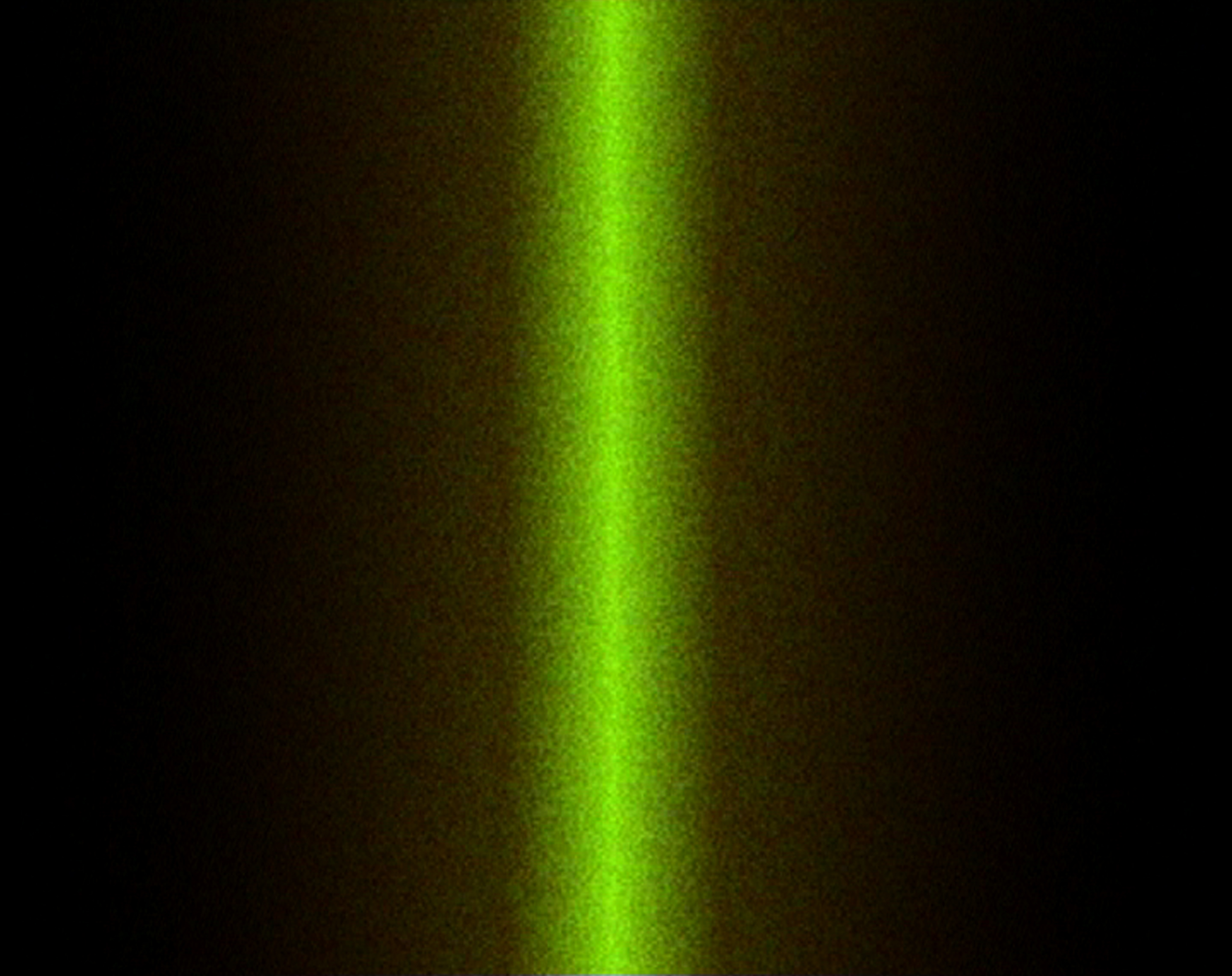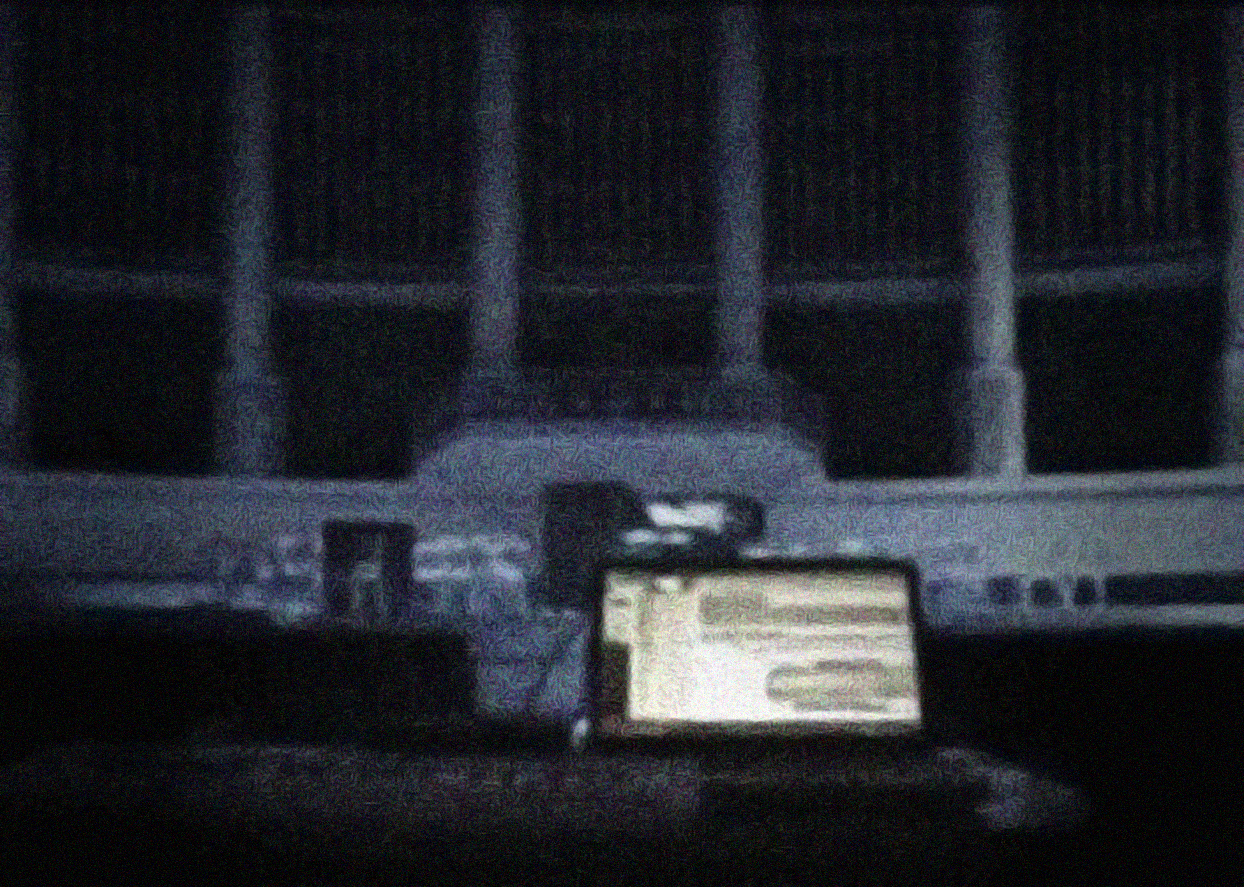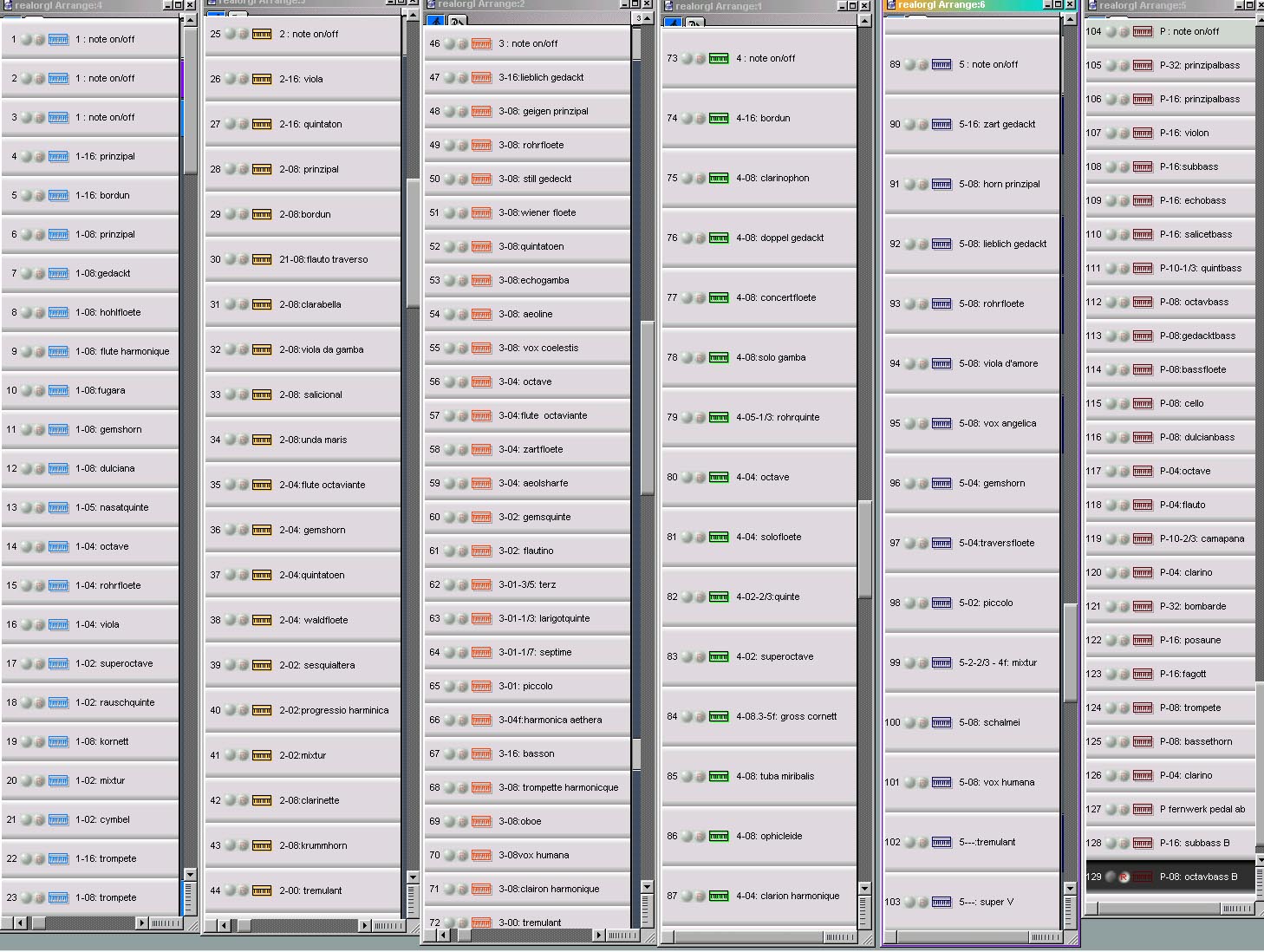
MINUS (2003)
Audiovisual Concert Performance, Single Channel Video, 6-Channel Audio
© GRANULAR≈SYNTHESIS (Kurt Hentschläger & Ulf Langheinrich)
Originally commissioned for the opening of “Wien Modern” Festival, Vienna
and specifically so for the Rieger Organ in the Viennese Konzerthaus.





MINUS is a 1-hour composition for two pipe organs and one digitally generated stream of audiovisual information, with the visual part projected on a 8x11 meter screen.
The work starts in complete darkness, with all the numerous exit lights manually obscured and video-projector beam cut. Ambient sound builds from the organ during this initial blackout while almost imperceptible flicker then introduces both mimimal light and visual element. From there the concert, both sonically and visually expands towards maximum intensity and drama, after which it fades.
The electronic sound part of the composition was diffused by multiple numbers of small and obscured loudspeakers and at its low end powered by a battery of subwoofers. The soundscape engulfed the audience rather than creating distinct sound events at localizable positions.
MINUS was a site-specific creation for the grand hall of the Konzerthaus Vienna, a place not only known for its history, architecture and superb acoustics but also for its massive, 5 manuals and 116 stops pipe organ. The organs wall of apparently countless pipes looks as iconic as it sounds when it comes alive via the array of five keyboards and one pedal.
Music written for organs is usually determined by the interface for the performing musician, which historically is the keyboard. This interface though doesn’t have to be the singular way to access the sound producing pipe works. The Konzerthaus organ, fabulously, is fully MIDI controllable. MIDI control allows to think and access the sonic potential of the pipe works without writing for a performing musician.
Compared to a live organist however, the fairly unattractive performance of a sequencer means to skip a great deal of what is normally associated with a concert for pipe organ. In exchange it allows to integrate the complete sonic capital of the pipe work into the sequencer based overall audiovisual composition of MINUS. Still, the first part of MINUS is reserved solely for the pipe works.
The second pipe organ in play was the old baroque organ of the Michaelakirche in Vienna. The sounds of the Michaelakirche are unique for another reason. They are based on the opportunity to adjust the amount of air accessing a pipe by means of fully mechanically controllable stops. Reduction of air pressure from the default full pressure results in beautifully ethereal colors and mists of sound.
The sounds produced by this fully mechanical instrument based on a defined number of first of all fixed keys but constantly changing air pressure into the various registers. As a part of the compositional process they are recorded in advance and during MINUS are played back over the PA in the Konzerthaus. They perfectly blend with the digitally controlled sound of the Konzerthaus organ as well as with electronically generated sounds.
The visuals are almost aseptically pure and minimal, a counter position to the big blend of sounds. The intricate micro time treatment results in audiovisual flicker and stroboscopic patterns and in combination with subsonic frequencies this pulsating, resonant matrix may be efficient on a neuronal and sensorial level.
Thus, MINUS is another laboratory to investigate the possibilities of audiovisual fields and oscillations together with an audience. Like other recent work it may appear less violent and oppressing but physical and tactile: a sensual field, a landscape, maybe an inner landscape. The visual representation is a membrane, a more or less transparent surface of a certain colour and structure. The sound is a body of a certain consistence and weight but probably as a premiere this time the sound is partly really subtle even almost inaudible.
_______________
ORF online 04.11.2002 / KulturDurchdringende Klangwogen/
Audivisuelle WuchtVon Rainer Elstner.
Das Eröffnungskonzert von Wien Modern sorgte beim Publikum für Diskussionen. Mit großen Lautsprecherbatterien erzeugten Granular=Synthesis Klänge von körperlich spürbarer Wucht. "MINUS", ein Auftragswerk des Festivals, knüpft an frühere Arbeiten des Sound-Duos an.
Das Eröffnungskonzert von Wien Modern 2002 am Freitagabend ging an die Nieren: Selbst Teile des hartgesottenen Festival-Publikums verließen vorzeitig den Saal. Das Duo Granular=Synthesis hatte im Großen Konzerthaussaal unter eine Projektionsleinwand große Bass-Lautsprecher auf die Bühne gestellt. Fast unhörbar fing das Stück "MINUS" an und entwickelte Schallkräfte von körperlich spürbarer Wucht. Subfrequente Schwingungen machten die Musik körperlich spürbar - als stünde man direkt unter einem Hubschrauber und erlebe das Rotorenflattern in Zeitlupe.
Klangquellen im abgedunkelten Saal waren die Konzerthausorgel, aufgezeichnete Klänge einer Barockorgel und elektronisch generierte Klänge.Dazu projizierten Granular=Synthesis stroboskopisch pulsierende, dunkel-monochrome Flächen, abgelöst von einem hellen Lichtstreifen - nichts für Migräne- oder Herz/Kreislauf-Kranke.
Klangmassen per Mausklick
Organisten sah man keinen: Ein Software-Programm steuerte über MIDI die Cluster der Konzerthausorgel. Die Kombination der verschiedenen Klangquellen führte zu einem insgesamt weniger aggressiven Gesamteindruck als etwa ihr 2000 im Rahmen von Wien Modern uraufgeführtes POL 3.0. Denn "MINUS" ist durch lang klingende Schallereignisse gekennzeichnet, fast ohne abrupte Übergänge.
Ein Eröffnungsabend, der auch als Ansage interpretiert werden kann: Wien Modern öffnet sich weiter außermusikalischen Medien wie Tanz, Film und Video. Auch wird die Zusammenarbeit mit Künstlern gesucht, die nicht akademisch ausgebildete Musiker oder Komponisten sind. So wie Granular=Synthesis, die im Feld der Bildenden Kunst - etwa mit der Einladung zur Biennale von Venedig - große Anerkennung erlangt haben.
The work starts in complete darkness, with all the numerous exit lights manually obscured and video-projector beam cut. Ambient sound builds from the organ during this initial blackout while almost imperceptible flicker then introduces both mimimal light and visual element. From there the concert, both sonically and visually expands towards maximum intensity and drama, after which it fades.
The electronic sound part of the composition was diffused by multiple numbers of small and obscured loudspeakers and at its low end powered by a battery of subwoofers. The soundscape engulfed the audience rather than creating distinct sound events at localizable positions.
MINUS was a site-specific creation for the grand hall of the Konzerthaus Vienna, a place not only known for its history, architecture and superb acoustics but also for its massive, 5 manuals and 116 stops pipe organ. The organs wall of apparently countless pipes looks as iconic as it sounds when it comes alive via the array of five keyboards and one pedal.
Music written for organs is usually determined by the interface for the performing musician, which historically is the keyboard. This interface though doesn’t have to be the singular way to access the sound producing pipe works. The Konzerthaus organ, fabulously, is fully MIDI controllable. MIDI control allows to think and access the sonic potential of the pipe works without writing for a performing musician.
Compared to a live organist however, the fairly unattractive performance of a sequencer means to skip a great deal of what is normally associated with a concert for pipe organ. In exchange it allows to integrate the complete sonic capital of the pipe work into the sequencer based overall audiovisual composition of MINUS. Still, the first part of MINUS is reserved solely for the pipe works.
The second pipe organ in play was the old baroque organ of the Michaelakirche in Vienna. The sounds of the Michaelakirche are unique for another reason. They are based on the opportunity to adjust the amount of air accessing a pipe by means of fully mechanically controllable stops. Reduction of air pressure from the default full pressure results in beautifully ethereal colors and mists of sound.
The sounds produced by this fully mechanical instrument based on a defined number of first of all fixed keys but constantly changing air pressure into the various registers. As a part of the compositional process they are recorded in advance and during MINUS are played back over the PA in the Konzerthaus. They perfectly blend with the digitally controlled sound of the Konzerthaus organ as well as with electronically generated sounds.
The visuals are almost aseptically pure and minimal, a counter position to the big blend of sounds. The intricate micro time treatment results in audiovisual flicker and stroboscopic patterns and in combination with subsonic frequencies this pulsating, resonant matrix may be efficient on a neuronal and sensorial level.
Thus, MINUS is another laboratory to investigate the possibilities of audiovisual fields and oscillations together with an audience. Like other recent work it may appear less violent and oppressing but physical and tactile: a sensual field, a landscape, maybe an inner landscape. The visual representation is a membrane, a more or less transparent surface of a certain colour and structure. The sound is a body of a certain consistence and weight but probably as a premiere this time the sound is partly really subtle even almost inaudible.
_______________
ORF online 04.11.2002 / KulturDurchdringende Klangwogen/
Audivisuelle WuchtVon Rainer Elstner.
Das Eröffnungskonzert von Wien Modern sorgte beim Publikum für Diskussionen. Mit großen Lautsprecherbatterien erzeugten Granular=Synthesis Klänge von körperlich spürbarer Wucht. "MINUS", ein Auftragswerk des Festivals, knüpft an frühere Arbeiten des Sound-Duos an.
Das Eröffnungskonzert von Wien Modern 2002 am Freitagabend ging an die Nieren: Selbst Teile des hartgesottenen Festival-Publikums verließen vorzeitig den Saal. Das Duo Granular=Synthesis hatte im Großen Konzerthaussaal unter eine Projektionsleinwand große Bass-Lautsprecher auf die Bühne gestellt. Fast unhörbar fing das Stück "MINUS" an und entwickelte Schallkräfte von körperlich spürbarer Wucht. Subfrequente Schwingungen machten die Musik körperlich spürbar - als stünde man direkt unter einem Hubschrauber und erlebe das Rotorenflattern in Zeitlupe.
Klangquellen im abgedunkelten Saal waren die Konzerthausorgel, aufgezeichnete Klänge einer Barockorgel und elektronisch generierte Klänge.Dazu projizierten Granular=Synthesis stroboskopisch pulsierende, dunkel-monochrome Flächen, abgelöst von einem hellen Lichtstreifen - nichts für Migräne- oder Herz/Kreislauf-Kranke.
Klangmassen per Mausklick
Organisten sah man keinen: Ein Software-Programm steuerte über MIDI die Cluster der Konzerthausorgel. Die Kombination der verschiedenen Klangquellen führte zu einem insgesamt weniger aggressiven Gesamteindruck als etwa ihr 2000 im Rahmen von Wien Modern uraufgeführtes POL 3.0. Denn "MINUS" ist durch lang klingende Schallereignisse gekennzeichnet, fast ohne abrupte Übergänge.
Ein Eröffnungsabend, der auch als Ansage interpretiert werden kann: Wien Modern öffnet sich weiter außermusikalischen Medien wie Tanz, Film und Video. Auch wird die Zusammenarbeit mit Künstlern gesucht, die nicht akademisch ausgebildete Musiker oder Komponisten sind. So wie Granular=Synthesis, die im Feld der Bildenden Kunst - etwa mit der Einladung zur Biennale von Venedig - große Anerkennung erlangt haben.